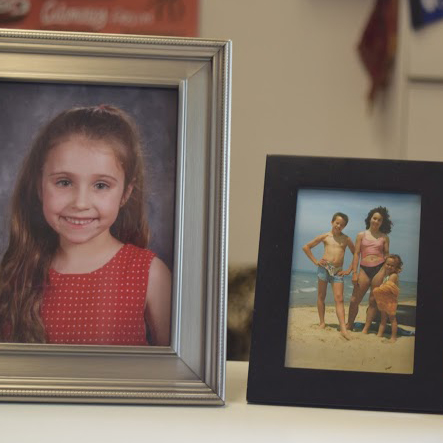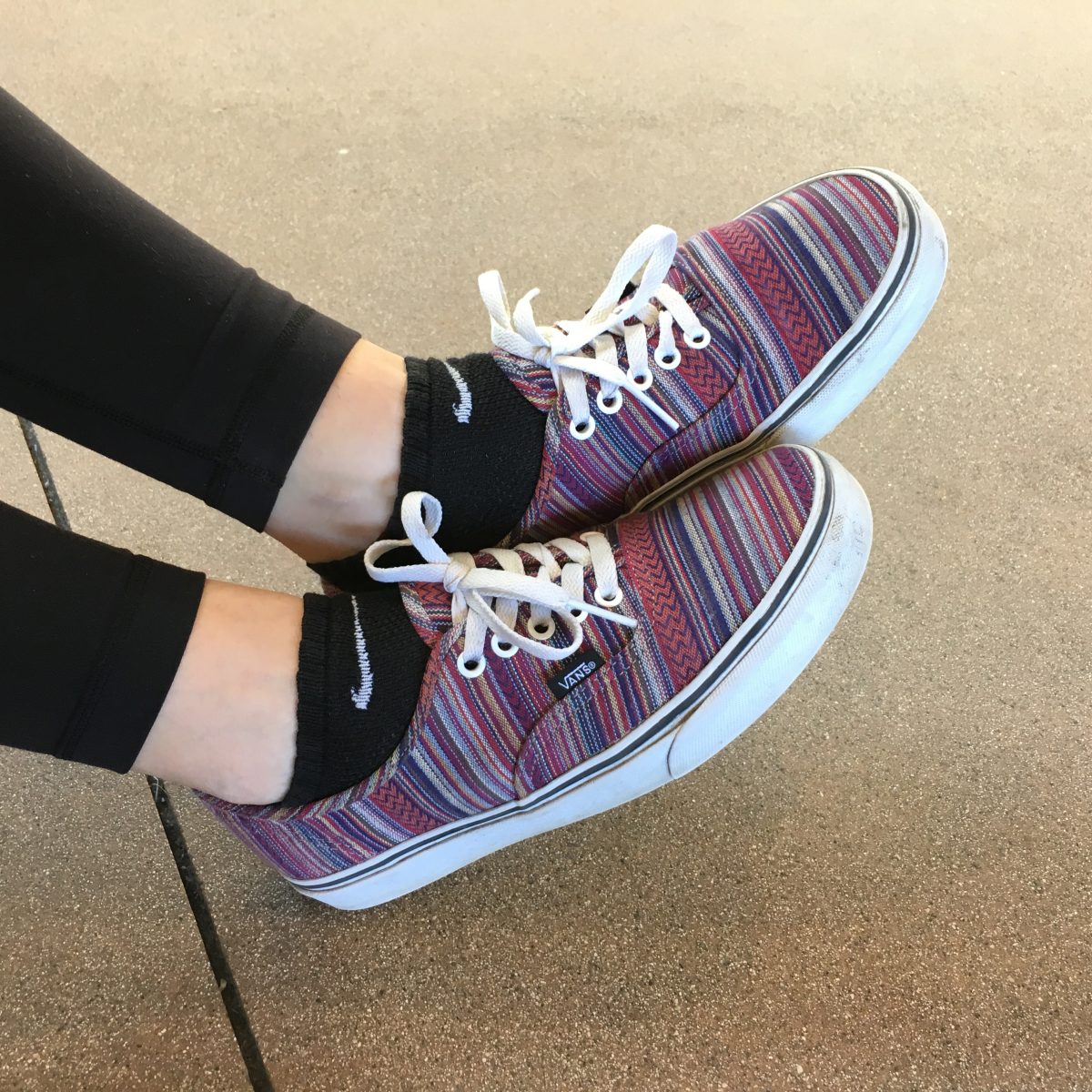
By: Mikaela ’13 and Lori ’14
Alumna Liza ’10*, a former American Apparel salesperson and part-time model, had been working at the Santa Monica location for two weeks when she got a call on her cell phone from an unrecognized number.
“Hi, it’s Dov, you now work for me. How’s American Apparel treating you?” Founder and CEO of American Apparel Dov Charney said.
American Apparel (AA), a $500 million Los Angeles retailer that practices “vertical integration” (meaning that it controls every aspect of its clothing production), is known for its sweatshop-free manufacturing, hipster demographic and risque advertising campaigns. Ads feature young girls with their legs spread or in other provocative poses against stark white backgrounds with dissatisfied expressions. The amateurish nature of the photographs creates a further level of intimacy, as if you just happened to walk into a girl’s bedroom and saw her arching her back and pouting in a mesh leotard. In essence, the ads sell unromanticized adolescent sex.
Apparently, Charney had called because he was excited that Liza, at 15 years old, was the youngest AA employee at the time, and he wanted to offer her a modeling job. Skeptical, Liza declined.
“So, you like working here?” Charney asked.
“Yeah, I love it.”
“Okay, then I’m going to give you a $500 bonus.”
As a result of this kind of rampant unprofessionalism, AA has received a lot of negative media attention. Charney has been sued by 15 former employees in the last eight years, each of whom cited sexual harassment, sexual assault or a combination of the two. Additionally, the company recently caught flak for employing illegal immigrants and ultimately was forced to fire roughly 1,800 employees (about one quarter of its total workforce).
Many Marlborough students and Alumnae work or have worked at the controversial retailer as salespeople or models, and an even larger number shop there. The company is the go-to retailer for many class and team sweatshirts and t-shirts, as well as for some Marlborough apparel sold in the Student Store.
But should the School and its students support a company that may be taking advantage of its models’ youth, illegally discriminating by appearance in the hiring process and objectifying women in its advertising campaigns? Marlborough aims to produce strong, intelligent and empowered women, but when the School gives business to American Apparel is it endorsing the exploitation of young girls? Even if students knowingly consent to being photographed in provocative positions, is it appropriate for a sixteen year old girl in a mesh shirt with no bra to be spreading her legs on a billboard on Hollywood Boulevard?
IS THIS EVEN LEGAL?
American Apparel (AA) requests that all applicants send in four photographs of themselves, meaning that prospective models, salespeople and factory workers are all subject to evaluation based on appearance; this discriminatory practice is technically illegal.
The vast majority of AA models are salespeople who are asked to model, which many people consider a thinly veiled cover-up for hiring only skinny, attractive salespeople.
According to Alumna Audrey Alger ’12, who worked at the AA store on the Third Street Promenade for five months in 2009 and modeled for the company from 2009-2011, AA never discloses how exactly the images submitted with an employment application will be used.
“I think that the fact that they take a photo before they hire you to get you quote unquote approved is kind of sketchy. I don’t think that’s very good,” Alger said. “I honestly have no clue why they do it. I think it’s to approve the way you look.”
Another former AA salesperson and model, Sean Carl Thomas, 23, agreed that the company uses the photos to ensure that they only hire people with the right look.
“It is definitely biased, but that’s what the company wants to do…I think that’s pretty bad discrimination,” Thomas said.
According to Nancy Bertrando, a labor lawyer based in Los Angeles, legal measures prohibit employers in California from forcing applicants to apply with photographs unless it can be proven that photographing well is an important part of the job, meaning it would not be illegal for AA to make potential models send in photos but it is not okay to do the same with sales applicants.
“The burden is on the employer to show why the photo is important,” Bertrando said. “I always advise against requiring photos in the application process because an employer can be accused of discriminating against applicants based on their age, race, and be accused of pre-screening applicants based on their looks.”
Companies that discriminate based on applicant’s looks or race can receive heavy fines. In April 2005, the US Supreme Court ruled against clothing company Abercrombie & Fitch in a suit over discrimination in the hiring and treatment of employees based on race, gender and appearance. Abercrombie & Fitch was ordered to pay a settlement of $50 million.
In order to prevent employees from talking to the press or publicly suing Charney, AA makes people sign confidentiality agreements, which ensure they do not disclose anything to journalists, and arbitration agreements, which ensure that legal action against the company is done in “arbitration,” outside of the courts and the public eye.
EXPLOIT OR EMPOWER?
“Meet Melissa,” reads an AA magazine ad, consisting of four photographs of a dark haired, petite girl in a soaking wet white T-shirt and black underwear. Melissa is braless, and her still-developing breasts are clearly the intended focal point of the ad.
Some question the propriety of such ads and wonder whether AA is taking advantage of adolescents, while others maintain that AA’s ads allow young girls to embrace their sexuality and declare their acceptance of their bodies.
The average age of an AA employee is 26, but most models are much younger than that.
“Usually the things [the models] do are part of the adult scene. [The models] are put on display and are exposed as a young person surrounded by adults,” School Counselor Emily Vaughn said.
However, some salespeople say they find the option of modeling empowering and that Charney, who sometimes stops by to oversee and provide creative feedback at photo shoots, is not intentionally oversexing young girls. Alger, who participated in a number of photo shoots, the results of which appeared online, on billboards, on buses and in magazines, argues that it is in fact the models who request minimal clothing.
“The models themselves ask [to not wear bras], like they are the ones that want to be naked. Some girls just can’t wait to be 18 so they can just be like half naked in photos,” Alger continued, “I never wanted to do anything super crazy though. That’s not me at all.”
In 2006, ABC news interviewed Charney about rumors of his untoward behavior at photo shoots. “I think for a designer to be in his underwear when he’s designing underwear is quite common,” Charney told Barbara Walters. “And I’m in my underwear in my office all the time.” Thomas said he had heard from other models about Charney’s sexual advances. “There’s definitely a line that I think he is crossing… being so forward,” Thomas said. “I think it is creepy.”
Alger, however, points out that the company is sensitive to the requests of the models.
“They’ll be like, ‘Oh, do you want a bra with this?’ and if the person is like, ‘Oh no, I don’t care,’ then they’re not going to give you a bra, but if you’re like, ‘Oh yeah, can I have a bra?’ they’re gonna give you a bra,” she said.
Thomas said he sees being asked to model as a sort of validation of his appearance and so does not object to the being given the opportunity.
“I had never [modeled] before, and I was flattered to do it,” he said.
TEEN SEX FOR SALE?
AA ads resembling soft-core porn are plastered all over Los Angeles, but is it appropriate for families and children to be subjected to images of half-naked minors on every block?
Thomas argues the images seem more inappropriate than they actually are because the store sells cheaper merchandise than other fashion companies whose ads involve nudity.
“I’ve seen more scandalous pictures from Calvin Klein, but [Calvin Klein is] higher end fashion, so it’s art,” he said.
According to Tawny Sanders, mother of Paris ’14 and Fashion Director of the Beverly Hills Courier, AA is successful in its attempts to appeal to an indie, teenage demographic. Sanders said that when she books a model for the eight-page fashion spread she puts together each month, she takes into account her ability to sell to a specific market.
“I look at how the photo and the girl are going to connect to my audience. I think American Apparel does a really good job in that way,” Sanders said.
That being said, Sanders said she does not want her own daughter, who is represented by Next Models, to model for AA.
“My parents told me that modeling at American Apparel has never been an option because of their ads being too sexualized,” Paris said. Cameron ’15, who is represented by Ford Models, also said that her parents will not allow her to model for AA.
English instructor David Long laments the hypersexualized images of young girls in AA ads and notes how disturbing it would be to see one of his students’ breasts on a billboard.
“I will admit to driving by and seeing American Apparel ads on a billboard that included someone topless or whatnot, and thinking, what were to happen if a Marlborough girl were to go down that particular path?” Long said, in reference to the very slight difference between ads featuring Violets and those that show girls who may as well be.
However, negative reactions to exhibitionism in the ads may have more to do with the public accusations of sexual assault and harassment brought upon Charney in the recent years than with the images themselves. In February of 2012, for example, Charney was sued by Irene Morales, who claimed he kept her captive in his apartment for many months as a “sex slave.” Four other women came forward with similar allegations shortly after Morales did. While the verdicts on these cases have yet to be determined, AA ads have since come under further scrutiny.
Still, many Marlborough students are unaware of the myriad charges brought against Charney. Zoe ’15 said she enjoys shopping at AA.
“I really like their clothes,” Zoe said. “But… their advertisements are kinda slutty.”













David H • May 16, 2013 at 12:21 am
I work for american apparel.
What is wrong with a boss giving an employee a $500 bonus?